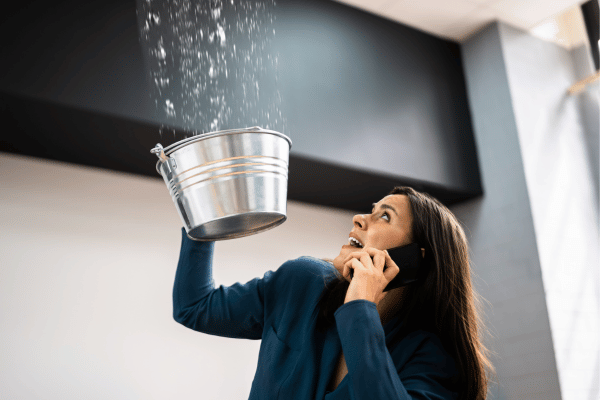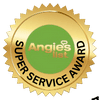
Water damage can strike without warning. One moment you’re enjoying a quiet evening at home; the next, you’re stepping into a soggy hallway with water creeping into every corner.
Floods, burst pipes, severe storms—whatever the cause, it’s never a fun surprise. While you can’t always prevent water damage, you can prepare for it. That’s where having a solid emergency plan comes in.
At Edgeline Restoration, we’ve witnessed how a little planning can save homeowners a lot of stress (and money!). Whether you’re in Marysville, Arlington, or anywhere else in Snohomish County, we’re your go-to team for water damage restoration.
If you’ve ever searched for water damage restoration near me, water damage restoration Marysville, or water damage restoration Arlington, you’ve likely seen our name. We take pride in being a local, community-focused business that understands the specific challenges of our rainy climate.
In this blog post, we’ll walk you through the key steps to create a water damage emergency plan. Think of it as an insurance policy for your peace of mind—a way to know exactly what to do if water starts leaking or flooding into your home.
1. Understand Your Home’s Risk Factors
Not all homes face the same water damage risks. Maybe you live near a river or in a neighborhood prone to heavy rainstorms. Perhaps your house is older, with aging pipes that could burst under pressure. Identifying these unique risk factors is the first step in forming your emergency plan.
Ask yourself:
- Do I live in a flood zone?
- Have I noticed damp spots, musty smells, or small leaks in my home before?
- Are my gutters frequently clogged?
- Is my basement prone to water seepage during storms?
These questions might highlight areas that need extra attention. For instance, if you’re in a flood-prone region, consider sandbags or other flood barriers. If your gutters are always full of leaves, schedule more regular cleanings. And if you’re worried about old pipes, think about upgrading them or at least keeping an eye on any suspicious spots. A few preventative steps now can save you from a soaked living room later.
2. Map Out Your Home’s Water System
If a pipe bursts in the middle of the night, you’ll want to know exactly how to shut off the water, fast. That means knowing where your home’s main water shut-off valve is located and how to access it quickly. Consider labeling it or placing a bright sticker nearby so there’s no confusion when you’re in a hurry.
Key areas to note on your home “water map”:
- The main shut-off valve (often found near the perimeter of the house or basement).
- Individual shut-offs for sinks, toilets, or appliances.
- The water heater, which may have its own shut-off valve.
If you have a more complex system—like a sump pump or a French drain—make sure you and your family members know how to access and check these too. In an emergency, your first move is often to stop the water at its source. After that, it’s time to call water damage restoration contractors like us at Edgeline Restoration to handle the cleanup and repairs.
3. Create an Emergency Contact List
When water is gushing across your floors, you don’t want to be frantically Googling “water damage restoration near me” on your phone. It helps to have a list of important numbers ready to go. This list should be kept in an easy-to-find spot, like taped inside a kitchen cabinet or saved as a note on everyone’s smartphones.
Who should be on your list?
- Water damage contractors: Pick a reliable local company (hint: we’re here if you need water damage restoration Marysville or water damage restoration Arlington!).
- Your insurance company or agent
- A trusted plumber
- Local emergency services (especially if you’re prone to severe weather or floods)
Don’t forget to share this list with anyone living in your home. In an emergency, every second counts. Having these contacts at your fingertips means less time spent searching, more time spent preventing further damage.
4. Gather Supplies for a “Water Damage Kit”
While you can’t repair major water damage on your own (that’s where water damage contractors come in), you can—and should—have basic supplies to tackle small leaks or to protect your belongings before help arrives.
Consider putting together a “Water Damage Kit” with:
- Buckets and Mops: For quick cleanups or to catch drips.
- Towels: Keep a stash of old towels for soaking up water on floors or carpets.
- Plastic Sheeting: You can lay this over furniture or boxes to help keep them dry if water is dripping from above.
- Rubber Gloves and Boots: Personal protection matters, especially if the water could be contaminated.
- Flashlights and Batteries: If a water event knocks out power, you’ll need a reliable light source.
Store these items in an easily accessible area. If water starts leaking, you won’t have to scramble to find a mop or plastic sheeting. Plus, having the right tools on hand makes you feel more in control when an emergency hits—which can be half the battle.
5. Outline Clear Steps for Everyone in Your Home
A good emergency plan is only effective if everyone understands it. If you share your home with family members or roommates, it’s crucial to walk them through your plan.
Consider having a brief “water damage drill”:
- Locate the Leak: Show everyone how to spot the source of water.
- Shut Off the Water: Make sure every adult (or responsible teen) knows how to turn off the main valve.
- Call for Help: Decide who will contact Edgeline Restoration or another water damage restoration service, and who will call the insurance company if needed.
- Protect Valuables: If there’s time, move important documents, photos, or electronics away from the water.
This might sound over the top, but when water is rushing in, people panic. Having a mini “practice run” ensures everyone remains calm and knows their role if an actual emergency hits.
6. Review Your Insurance Coverage
You can do everything right—maintain your plumbing, clean your gutters, store items off the ground in your basement—and still get blindsided by a random disaster. That’s why insurance is so important.
Key points to check:
- Flood Coverage: Standard homeowner’s policies often don’t include flood damage. You might need a separate flood policy if you live in a high-risk area.
- Mold Provisions: Some policies have limits or exclusions for mold cleanup, which can be a major expense after water damage.
- Deductible: Be sure you know how much you’ll need to pay out of pocket before coverage kicks in.
While you can’t always pick the perfect plan, the more you understand your policy, the better you can prepare. And remember, water damage restoration can get expensive, especially if mold or structural repairs are involved. It pays to have solid coverage and to keep your insurance agent’s number handy.
7. Know When to Call in the Pros
There’s a difference between a small drip under your sink and a burst pipe flooding your basement. Minor leaks can sometimes be fixed on your own—tightening a connection or replacing a worn washer might do the trick. But when water starts soaking into floors, walls, or ceilings, you’re dealing with a situation that usually calls for professional water damage restoration contractors.
Why hire professionals like Edgeline Restoration?
- Rapid Response: We act fast, which is crucial to minimizing damage.
- Thorough Drying: Hidden moisture can lead to mold, warping, or rot. We have industrial-grade fans, dehumidifiers, and specialized tools to detect and remove moisture.
- Sanitization: Standing water can harbor bacteria, especially if it’s from flooding or sewage backup. We use professional disinfectants to keep your home safe.
- Restoration & Repairs: From replacing drywall to addressing mold, we can handle the complete job so you don’t have to juggle multiple contractors.
Even if you think you might manage on your own, a quick evaluation from a water damage restoration pro can save you from bigger headaches down the road. If you’re near Marysville or Arlington, you’ve got a local team—Edgeline Restoration—ready to help.
8. Keep Up with Home Maintenance
Prevention is a huge part of any emergency plan. Regularly maintaining your home can drastically reduce the chances of a full-scale water disaster.
Simple tasks that make a big difference:
- Check Pipes & Hoses: Inspect the hoses on your washing machine, dishwasher, and refrigerator. Replace them every few years, especially if they’re rubber.
- Clean Gutters: Clogged gutters can force water under your roof shingles or right into your foundation.
- Inspect the Roof: Loose or missing shingles are often the culprit behind water leaks.
- Seal Cracks: If you see cracks in your foundation or walls, seal them quickly. Water can find its way in through even tiny openings.
A little diligence now can prevent a nightmarish scenario in the future. Pair good maintenance habits with an actionable plan, and you’ll significantly lower your risk of a water damage crisis.
9. Protect Your Valuables & Important Documents
It’s easy to underestimate how damaging water can be until it’s ruined priceless keepsakes or essential paperwork. Your emergency plan should include safeguarding these items ahead of time.
Tips for protecting valuables:
- Use Waterproof Bins: Store family photos, important documents, and memorabilia in sealed, waterproof containers.
- Elevate Electronics: Keep computers, external hard drives, and other electronics off the floor, especially if you work in a basement or first-floor office.
- Make Digital Copies: Scan crucial documents like birth certificates, insurance policies, and passports. Keep them in cloud storage or on a secure external drive located away from home.
While material items can often be replaced, you can save yourself a lot of heartache by taking a few simple precautions now. If water does reach your valuables, our team at Edgeline Restoration can advise on restoration or cleaning methods, especially for certain items that might still be salvaged.
10. Communicate Your Plan
An emergency plan is no good if it’s a secret. Make sure everyone in the household knows the basics: where the water shut-off is, who to call, and what supplies you have available.
If you have children, go over the basics in a calm, reassuring manner. Emphasize that they should never try to handle major leaks on their own, but they can help by alerting an adult as soon as they notice something wrong.
For older kids or teens, consider assigning them a role—maybe they’re in charge of grabbing the “Water Damage Kit,” or they know how to turn off the main water valve if they get home before you. Encouraging this kind of ownership can make an emergency feel less scary because everyone knows what to do.
Why Edgeline Restoration is Your Go-To Emergency Partner
At Edgeline Restoration, our mission is pretty simple: we want to be the first call you make when water threatens your home. Beyond water damage restoration, we also offer mold remediation, fire damage cleanup, and more. But for water emergencies, here’s why our neighbors in Snohomish County trust us:
- Local Expertise: We’re not just a random company you find online. We’re based here in Washington, so we know how frequent rain and storms can impact Marysville, Arlington, and surrounding areas.
- Fast Response: In a water emergency, time is everything. We arrive quickly and start working immediately to minimize the damage.
- Comprehensive Services: From pumping out water to replacing damaged drywall, we handle the entire restoration process. No need to juggle multiple crews.
- Personal Touch: We treat each home like it’s our own. We’ll keep you updated, explain every step, and work with your insurance company to make the process smooth.
When you’re putting together your emergency plan, make sure Edgeline Restoration is on that contact list. If you need water damage restoration Marysville or water damage restoration Arlington, we’re just a call away. And if you’re ever in doubt, searching water damage restoration near me will point you right to our team.
How Edgeline Restoration Protects Your Health & Home
We’re not just any water damage contractors. We focus on comprehensive, health-centered restoration. Here’s how:
Rapid Response
We know that every hour counts. The sooner we start the cleanup process, the fewer health risks you'll face.
Advanced Equipment
Our high-powered dehumidifiers, air movers, and air scrubbers ensure thorough drying and improved air quality.
Disinfection & Sanitization
We use professional-grade cleaning agents to eliminate bacteria, viruses, and mold spores—protecting you and your family from potential health threats.
Mold Remediation
If mold is already present, we identify all affected areas and remove it safely. We also treat the area to prevent regrowth.
Structural Repairs
From replacing drywall to reinforcing damaged support beams, our goal is to restore your home to its original (or better) condition—making sure it's both safe and comfortable.
Local Experts
Because we're based here in Washington, we know the climate and common problems. We also value personal relationships with our neighbors. We'll work with you to navigate insurance claims and make the process as painless as possible.
Final Thoughts
No one wants to think about their home being flooded or wrecked by leaking pipes. But taking time to prepare now can prevent panic—and even more damage—later on.
If the worst does happen, remember that Edgeline Restoration has your back. We’re local, experienced, and fully committed to getting you back to normal as quickly as possible. You can’t predict every water-related mishap, but you can control how you respond—and a solid water damage emergency plan is the best place to start.










